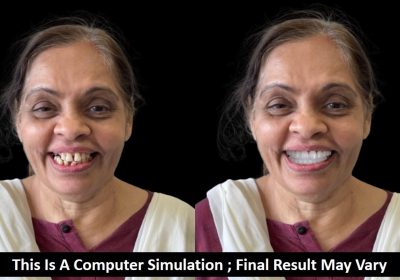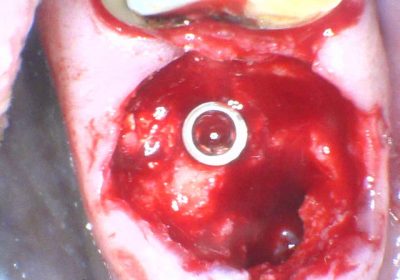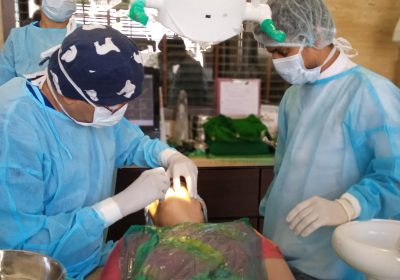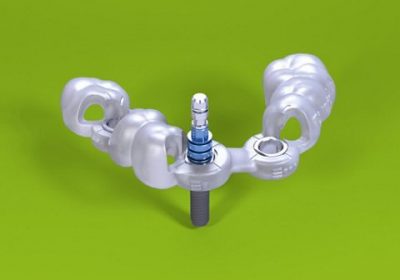Full Mouth Rehabilitation with Dental Implants
Full mouth rehabilitation with dental implants is a comprehensive dental procedure designed to restore the entire mouth's function, aesthetics, and health by using dental implants as the primary treatment modality. This treatment approach is typically reserved for individuals with extensive dental problems, including multiple missing teeth, severe tooth decay, advanced gum disease, or a combination of these issues. Full mouth rehabilitation with dental implants aims to provide a long-lasting, stable, and natural-looking solution for such patients. Here's an overview of what this procedure entails: 1. **Assessment and Planning**: The process begins with a thorough assessment of the patient's oral health. X-rays, scans, and clinical examinations are conducted to determine the extent of dental issues and the suitability of dental implants. A detailed treatment plan is then created, outlining the number of implants required and the type of dental restorations needed. 2. **Implant Placement**: Dental implants, which are artificial tooth roots typically made of biocompatible materials like titanium, are surgically placed into the jawbone. The number of implants and their precise locations depend on the patient's individual case. Local anesthesia is used during this procedure, and sedation options may be available for anxious patients. 3. **Healing and Osseointegration**: After implant placement, a crucial healing period follows. During this time, which can last several months, the dental implants integrate with the surrounding bone through a process called osseointegration. This fusion ensures the implants are securely anchored in the jawbone, providing a stable foundation for the prosthetic teeth. 4. **Abutment Placement**: Once osseointegration is complete, small connector pieces called abutments are attached to the implant posts. These abutments serve as a link between the dental implants and the final restorations. 5. **Final Restorations**: After the gum tissues have healed around the abutments, custom-made dental restorations (such as crowns, bridges, or dentures) are fabricated. These restorations are designed to mimic the appearance and function of natural teeth, and they are securely attached to the abutments. 6. **Ongoing Maintenance**: Proper oral hygiene and regular dental check-ups are crucial for the long-term success of full mouth rehabilitation with dental implants. Patients are typically provided with guidance on how to care for their new teeth, and they should follow a strict maintenance routine to ensure the longevity of their dental implants. Advantages of Full Mouth Rehabilitation with Dental Implants: 1. **Improved Functionality**: Dental implants offer stability and strength, enabling patients to eat, speak, and chew with confidence, similar to natural teeth. 2. **Enhanced Aesthetics**: The restorations used in this procedure are customized to look and feel like natural teeth, significantly improving the appearance of the smile. 3. **Long-Term Solution**: With proper care, dental implants can last for many years, often a lifetime, making them a cost-effective option in the long run. 4. **Preservation of Jawbone**: Implants stimulate the jawbone, preventing bone loss and maintaining facial structure over time, which is a common concern with traditional dentures. 5. **Comfort and Convenience**: Unlike removable dentures, dental implants are fixed in the mouth, eliminating discomfort and inconvenience associated with removable prosthetics. 6. **Improved Oral Health**: Full mouth rehabilitation can enhance oral health by preventing the shifting of remaining natural teeth and reducing the risk of gum disease. In summary, full mouth rehabilitation with dental implants is a transformative dental procedure that provides patients with a functional, aesthetically pleasing, and long-lasting solution for complex dental issues involving multiple missing teeth or extensive dental damage. It combines advanced surgical techniques with customized dental restorations to create a healthy, confident smile. A patient reports for replacement of a few missing teeth. On Examination it was found : 1]Posterior teeth were fractured and missing. 2]Anterior teeth were mobile. 3]Patient was chewing only with the front teeth. A thorough examination was done with Extra Oral Photographs, Intra Oral Photographs, CBCT Scan, 3D Scan with 3 Shape Scanner.OPG Scan, Various measurements like Vertical Dimensions, Smile Line, etc. A treatment plan was devised based on the principles of DSD[ Digital Smile Designing]. Digital technology was used to determine the final positions and look of Smile before actually doing it in the patient mouth. The surgery was done in just 2 visits, one for each jaw.[UPPER & LOWER]




